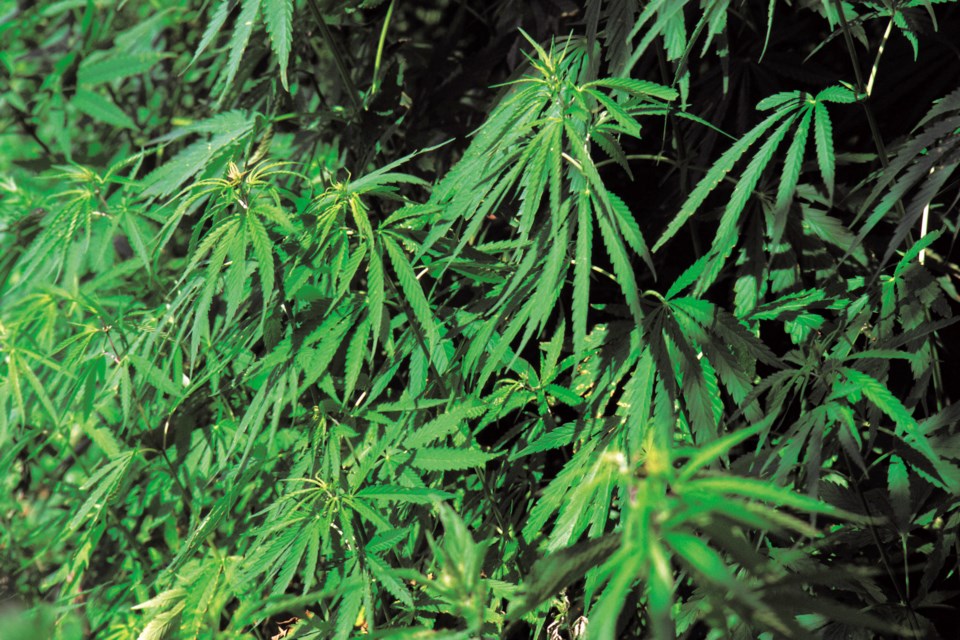Would-be cannabis growers trying to bring their buds to life need to remember that the once-illegal plant needs plenty of light in order to grow.
That’s one of the big pieces of advice Jim Hole, owner of Hole’s Greenhouses, gave the Gazette when asked how to best grow cannabis at home. Under federal law, adults can grow up to four plants per household from seeds purchased at licensed cannabis stores. This is primarily for those who own their own homes as renters, condo-dwellers and multi-family dwellings may not be allowed to if their landlord doesn’t permit it.
“It is a vigorous plant, there’s no question about it,” Hole said. “It grows rapidly, enjoys warmer conditions and you’ve got to have grow lights. If you skimp on the light, you’ll have a plant that’s more insipid in a sense. ”
The cannabis plant is originally from Asia but has since spread and is now grown around the world including in Canada. As of Oct. 17, cannabis oil, fresh cannabis, dried cannabis, seeds and plants are all permitted to be sold with edibles slated to be legalized for sale no later than Oct. 17 this year.
Hole said there’s some debate about how many types of cannabis plants there are, with some believing there’s as many as two or three. The reality, he said, is the plant has interbred so much over the years that it would be difficult to declare one strand being called the dominant one.
For those looking to grow at home, Hole suggests looking at getting good LED lights.
“The beauty of the LEDs is they give off much less heat so I don’t have a huge amount of heat buildup,” he said. “If you want to grow lettuce inside, it would require less than half of the light cannabis requires. (With) cannabis, you’re harvesting the buds off there, which is really essentially the female flower part, and it’s from high light areas. It grows more rapidly with more light and also produces a better profile of the stuff people are looking for in the plant.”
From seed to harvest, Hole said in general, it takes about three months but mentioned there are a number of lighting phases the plants have to go through. Once the cannabis plant reaches a certain height (roughly a few feet), growers will have to start a rigorous lighting schedule.
The first phase is allowing the plant to grow for 18 hours a day then shutting off the lights for six hours or so. Once the plant has reached two feet, Hole suggests switching to 12 hours of growing followed by 12 hours of darkness in order to allow them to flower.
“They’re like a poinsettia crop,” he said. “They have to have four days to flower or long nights, depending on how you want to look at it. Once it gets a couple of feet tall, it’s going to lead to leafy growth and kick into the flowering phase, which is what you’re trying to harvest these buds off the plants.”
Hole said growers need to watch out for male cannabis plants, since they don’t produce the flowers their female counterparts do. He added this probably won’t be a major concern for most people but it all depends on where they’re getting their seeds.
While lighting plays an important part, cannabis still requires the standard care that any plant life needs, such as regular watering and good soil. Hole advised home growers to stay away from soil purchased at general stores as well as avoiding any manure if they aren’t sure where it came from.
He described cannabis as being a sponge when it comes to heavy metals, which is important to consider when choosing soil.
“If you just get any old soil, you don’t know what’s in there,” he added. “You want to get the high-quality potting mixtures. Not just any old thing and just put it out. What people don’t realize when they buy any black market stuff ... one issue is heavy metal. People could be growing where there’s a lot of air pollution or by a roadside where they’re picking up car exhaust.”
He added that depending on a grower’s lighting regimen, a person could see four or five crops in a year. Above all, he said the main three components to growing is lighting, air and space.
“The only thing to keep in mind too is that cannabis isn’t just cannabis,” he added. “There are hundreds and hundreds of varieties of cannabis out there. You only just scratch the surface when you talk about cannabis. There’s just so many with all different profiles from psychoactive to medicinal to fragrance-like odours. It’s a massive world of different types out there.”




